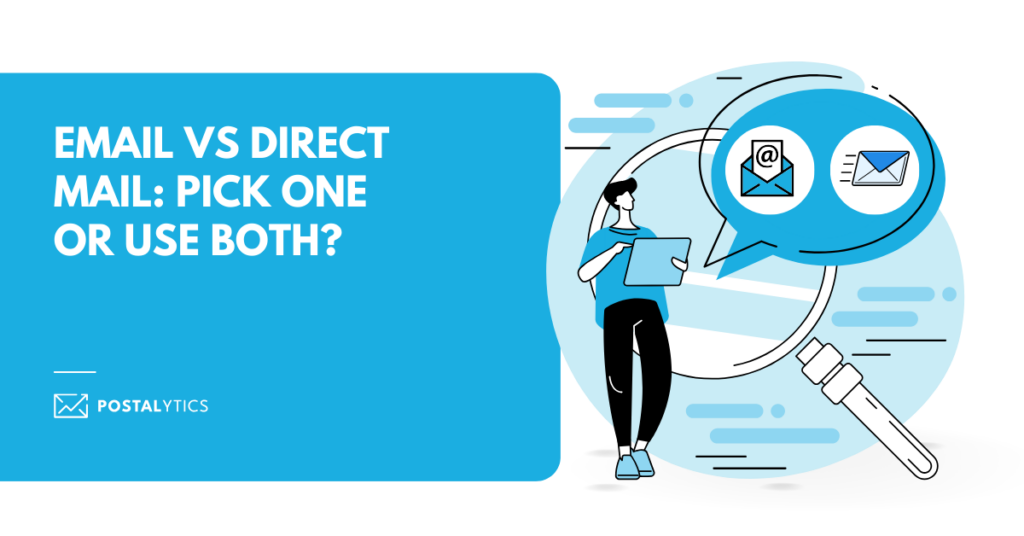
As the leading direct mail automation platform, we’ve had countless conversations with marketers facing the same dilemma: “Should I choose email or direct mail, or can I use both?”
It’s a common challenge, especially when every dollar spent needs to show a solid return. We’ve seen the frustration of marketers grappling with limited budgets, unsure of which channel will truly deliver results.
The truth is, there’s no one-size-fits-all solution. Your campaign’s success depends on the right mix, and we’re ready to break down the numbers and strategies that will help you make the best decision. Let’s find the approach that works for you.
What we’ll cover:
- Defining Email Marketing and Direct Mail
- What are Email vs. Direct Mail Average Response Rates?
- When to Use Direct Mail
- When to Use Email Marketing
- Direct Mail vs Email Marketing — Similar, but Different Channels
- Why Use Direct Mail Automation?
- Email Follow-Ups To Direct Mail Increase Response Rates
- Customers Prefer a Multi-Channel Approach
- Use pURLs To Measure Response
- Forget About Direct Mail Marketing vs Email Marketing – Grow Your Response Rates With Both!
Defining Email Marketing and Direct Mail

Email marketing and direct mail are two popular marketing channels used by businesses to reach their target audience. Each is an important strategy for ensuring that your message resonates with the people you want to reach.
What is Direct mail?
Direct mail involves sending physical marketing materials, such as postcards, brochures, or catalogs, directly to the recipient’s mailbox. This method allows for a tangible and personal touch, making it a powerful tool for creating a lasting impression.
Recipients are more likely to engage with physical materials, as they stand out in a way that digital messages often do not. However, direct mail can be more expensive than email marketing, and the production and distribution process can be time-consuming.
What is Email Marketing?
Email marketing is a form of digital marketing. It involves sending digital messages to a recipient’s email inbox. It is a cost-effective way to reach a large audience quickly and allows for easy tracking and analytics. Marketers can quickly measure the success of their email campaigns and make adjustments as needed.
However, email marketing campaigns can be less effective in terms of open rates and response rates, and it may be more challenging to stand out in a crowded inbox where spam filters can also pose a problem.
Which option is the best fit for your marketing campaign? To help you decide, let’s examine the response rates for both marketing strategies. This will give you a clearer picture to guide your decision.
What are Email vs. Direct Mail Average Response Rates?
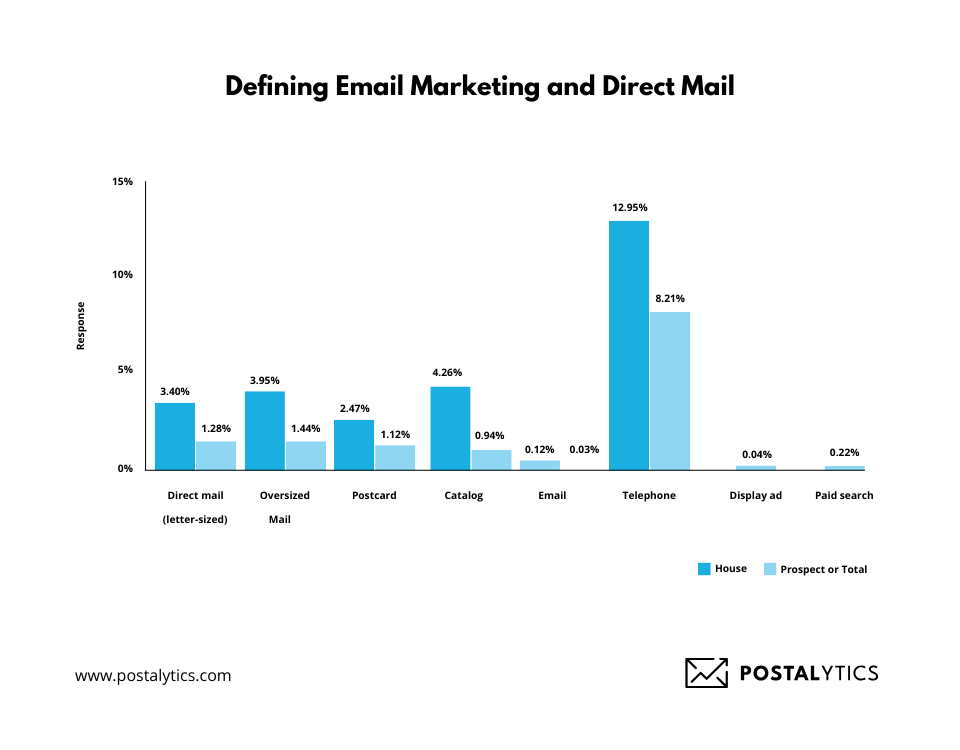
Direct mail is making its way back into marketing strategies, and for good reason. Even when created and sent through traditional, offline methods, direct mail generates impressive response rates.
A study by the Direct Marketing Association (DMA) using data from Bizo and Epsilon compared direct mail and email marketing. They found that direct mail had an average response rate of 4.4%, while email’s response rate was much lower at just 0.12%.
This shows just how effective direct mail can be. With less competition and higher open rates, direct mail is a powerful tool for reaching customers.
Want to better understand how direct mail response rates are calculated? Check out this post.
Conversely, email dominates in terms of return on investment (ROI). It’s incredibly cheap to send, allowing marketers to send out massive amounts of emails with little cost. The DMA found that email’s average ROI is $28.50 for every dollar spent, while direct mail’s ROI is $7.
Each day about 347 billion emails are sent globally, totaling a staggering 74 trillion per year. To give you an idea of how large that number is, if you laid 74 trillion dollar bills end to end, they would circle the Earth more than 120 times.
With such overwhelming email traffic – and email fatigue – it’s clear why many marketers are reconsidering their heavy reliance on email marketing.
When to Use Direct Mail
Direct mail can be used to build trust and credibility with your target audience, as it is perceived as a more personal and authentic form of communication. It is particularly effective for businesses that want to reach a specific geographic area or demographic or when you want to send personalized content to loyal customers.
For example, local businesses can use direct mail to target residents in their vicinity. Direct mail can also be used to promote high-end products or services, as it provides a tangible and premium experience for the recipient.
When you want to ensure that your marketing message is noticed and remembered, direct mail can be a powerful tool in your marketing strategy.
When to Use Email Marketing
Email marketing is an excellent choice when you want to reach a large audience quickly and efficiently. It is particularly effective for businesses that want to promote products or services that require a sense of urgency, such as limited-time offers or flash sales.
Email marketing can also be used to nurture leads and build relationships with your target audience, as it allows for easy segmentation and personalization. Personalizing your messages to specific segments of your audience can increase engagement and drive conversions.
When you need to communicate quickly and effectively with a broad audience, email marketing is an invaluable tool.
Direct Mail vs Email Marketing — Similar, but Different Channels
One of the reasons why using direct mail marketing and email marketing in tandem is overlooked is because direct mail and email are often compared to one another.
Email is seen as the modern equivalent of direct mail marketing. To include both channels in the same campaign is often viewed as redundant — but those views would be wrong.
Yes, they are channels that allow you to send marketing messages directly to your intended target in a personal way, but they aren’t seen as equivalent in the eyes of consumers.
Prospects engage differently with email than they do direct mail. It’s always on the go with them. They read it while they are at work or out and about with friends. It doesn’t feel the same to them as opening a piece of direct mail does.
Direct mail recipients tend to exhibit higher engagement and response rates compared to email recipients, indicating a stronger likelihood of taking action, such as making purchases. Direct mail scratches a different itch, and for that reason, companies should approach it as complementary but unrelated channels.
Why Use Direct Mail Automation?
Conventional marketing wisdom often causes us to make poor decisions about spending our marketing budget. Many people will tell you to keep channels separated to improve your ability to optimize campaigns specifically for that channel.
However, technological advancements have made it easier to create multi-channel campaigns and track consumers throughout their buyer’s journey, opening a wealth of options to forward-thinking companies that embrace creative thinking over conventional wisdom in their marketing.
Email marketing vs Direct mail isn’t a one-or-the-other type of thing. The two should work hand-in-hand.
Automated direct mail is a perfect partner-in-crime to any serious email marketing campaign. Marketers can cut through the digital noise and affirm a highly valuable touchpoint with their customers.
Email marketing services play a crucial role in managing subscriber lists, sending campaigns, and automating processes. These services are cost-effective and scalable, facilitating direct communication with audiences while providing detailed analytics and insights to improve ongoing campaigns.
As one Postalytics customer puts it:
Postcards have a much longer shelf life. They can end up acting as long-term reminders, almost like a business card.
Says Dr. Alex Rinehart from AZ Nutrition Center on using postcards and email to drive growth
Find out more about this revolutionary marketing channel in our quick video below:
Email Follow-Ups To Direct Mail Increase Response Rates
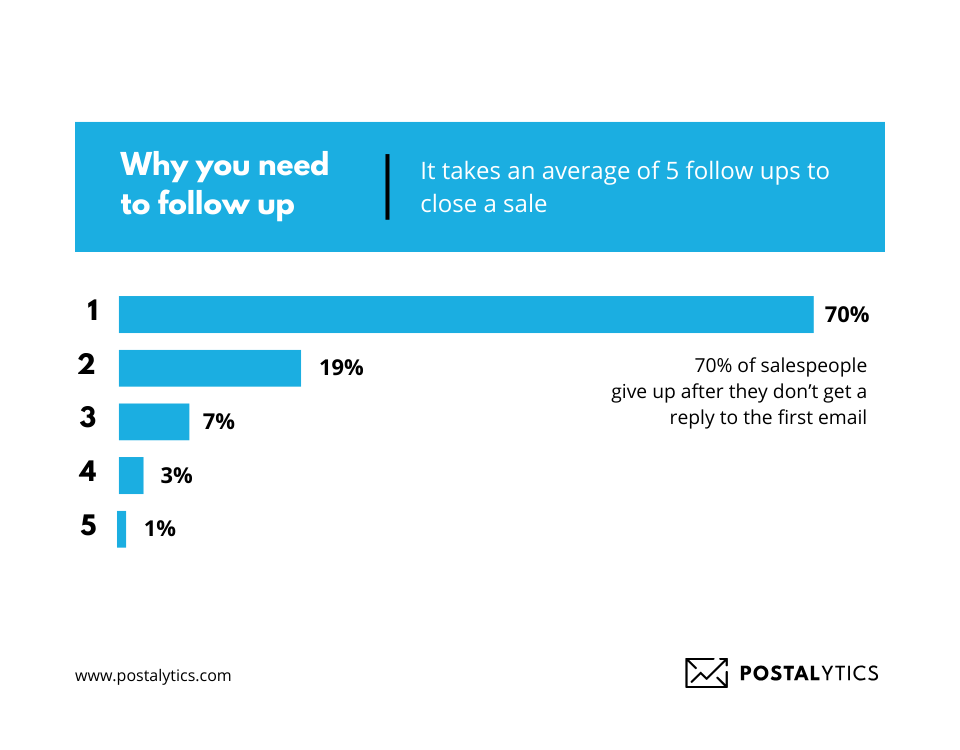
Email makes for the perfect follow-up to a direct mail campaign. How many times have you opened a direct mail envelope, been intrigued by an offer, and ultimately forgotten about it before accidentally throwing the offer away with other items and forgetting about it completely? It’s a common issue.
Consumers love to receive mail. It’s tangible and real. But younger demographics – despite being excited to receive it – aren’t as likely to take action on an offer that they receive in direct mail as older generations are. Direct mail is still an excellent tool for grabbing their attention, but having a reliable way to send reminders about the offer (or sweeten the pot) through a channel they are more comfortable dealing with can be extremely effective.
If you were to deliver a direct mail piece to a prospect on Monday, following up later in the week with an email reminder can be a great way to pull forgetful parties back into the fold. The email could reference the offer that they received through direct mail and provide a personalized link to a landing page. If the prospect had already visited the pURL that you had included with the piece of direct mail but had failed to convert, this would be a great way to improve your conversion rate.
When you have both the mailing address and email address of your prospects, it is silly not to use email to follow up with them after they receive your direct mail piece. It’s a fast and efficient way to bolster your campaign.
You can also approach this the other way and send direct mail as a follow-up to email campaigns.
Customers Prefer a Multi-Channel Approach
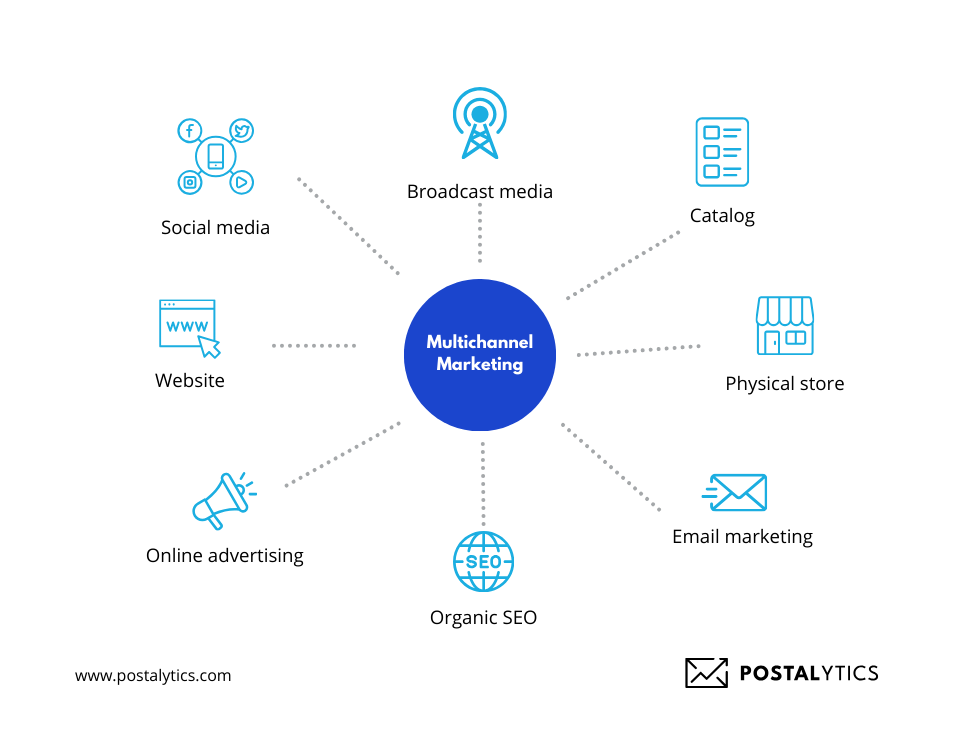
We live in a multi-channel marketing world. That alone should put the email vs direct mail statistics debate to rest.
Modern customers like it when brands can reach them on the platforms that they already frequent. For this reason, email and social media can both be excellent complements to direct mail marketing campaigns.
Customers actively prefer a multi-channel approach to the marketing communications that they receive – 72% of consumers state that they prefer to connect with brands through multiple channels before making a purchase.
Not only does a multi-channel approach help you to stay top-of-mind and build brand awareness, but it also allows you to ensure that you reach more people from your list.
A certain percentage of the people that you send your mailer to will throw away your direct mail piece without giving it a second look but will take notice when you send them an email because that is their preferred way to connect with brands.
Watch a webinar on how direct mail & email combine for double-digit response rates.
Use pURLs To Measure Response
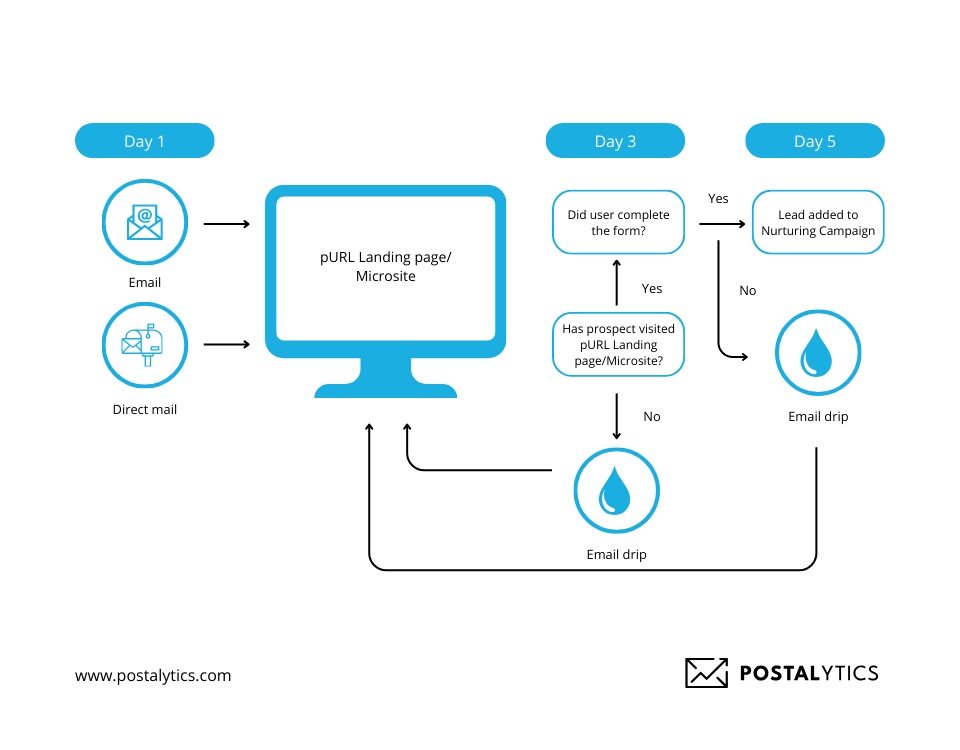
The Postalytics system leverages pURLs (personalized URLs) as a free option to add to every direct mail template. Our customers use them to make their offers more enticing by including the prospect’s name in the URL that they ask them to visit. These URLs can track your customers and provide you with analytics for how they engage with the materials that you send them.
For most direct mail campaigns, your main goal is to get your prospects to your website. That goal doesn’t change once they receive your direct mail offering. You still want them to get there, and visiting a website from email is much easier than manually typing in a URL from a postcard.
Using email to direct them toward your call to action when they are already familiar with your offer, in an environment where engagement is easier, could play a key role in bolstering your campaigns.
Forget About Direct Mail Marketing vs Email Marketing – Grow Your Response Rates With Both!
So, which is the best option – email or direct mail? A more important question might be: Why not use both?
At Postalytics, we always advise our customers to integrate direct mail and email workflows into a seamless marketing system for their business. Top marketing experts agree that a multi-channel marketing approach will always outperform a single-channel campaign. We’ve helped clients deliver millions of direct mail pieces, and we universally see higher response rates when the two channels are combined.
Want to see the proven direct mail campaign and email workflows that we use to foster double digital response rates for your next campaign?
About the Author

Dennis Kelly
Dennis Kelly is CEO and co-founder of Postalytics, the leading direct mail automation platform for marketers to build, deploy and manage direct mail marketing campaigns. Postalytics is Dennis’ 6th startup. He has been involved in starting and growing early-stage technology ventures for over 30 years and has held senior management roles at a diverse set of large technology firms including Computer Associates, Palm Inc. and Achieve Healthcare Information Systems.
